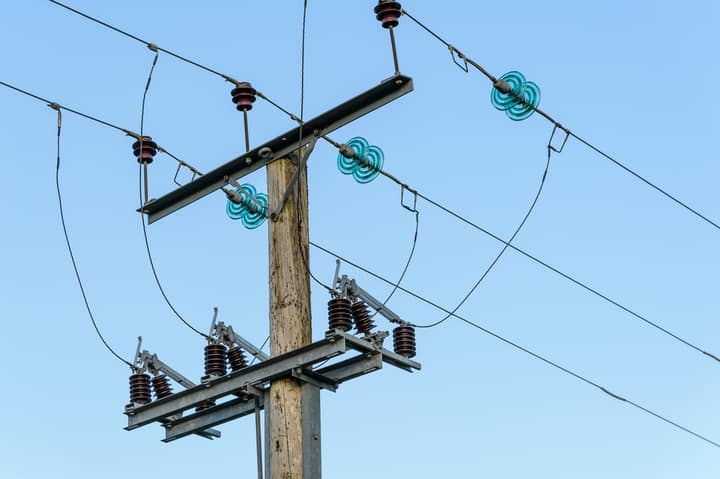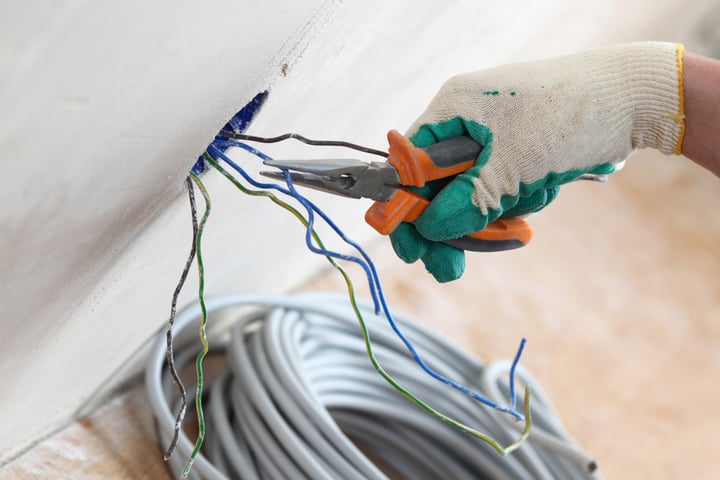A light that’s connected to a motion sensor can be useful in various settings. Motion sensor lights are a crime deterrent when fixed to the wall of your house. In an office or workplace, motion sensors can help to save energy and reduce bills.
With a motion sensor, lights switch on when there’s someone around to make use of them. If there are no signs of life, the lights will switch off after an agreed length of time.
Motion sensors can ensure that office lights don’t stay on all night, even though the last person left the office before the sun went down.
Correct configuration is important, and many people choose to add a light switch to their circuit in addition to their motion sensor.
Does a motion sensor light need a switch in addition to the sensor? Are there benefits to installing a switch to act as a manual override device?
A motion sensor light does not need a switch, but it’s still a good idea to add one. A switch ensures that the light won’t turn on unless you actually want it to. If you want the light to stop responding to movement, you will have that option if you’ve installed a switch.
To help you decide if your light needs both a motion sensor and a switch, I’ll be addressing:
- Whether or not motion sensors can be wired directly without another switch
- How a switch might affect your lighting system
- If it’s better to have direct wiring or include a switch
Can Motion Sensors Be Wired Directly To Mains?

You do not need to have a switch as part of your lighting circuit. It’s possible to create a lighting circuit with no switch of any kind, though this would mean that the light would always be on.
If you use a motion sensor, this can act as a switch, controlling when the light goes on and off. However, there might be times when you’d like to stop the light from responding to the motion.
If you want to stop the light from switching on every time anybody walks past, you can use a switch to stop it from working.
The switch can be used to stop the motion sensor from activating the light, so you can keep things dark if you’d prefer, or save electricity when you don’t need the light.
Switch vs Direct Wiring: What Is The Better Option?

Suppose your lights only respond to a motion sensor, with no switches to override them manually. In that case, they’ll always be activated by any type of motion.
In an office setting, this means that lights will be on whenever someone is working, even if they’re working in the middle of the day and there’s plenty of sunlight through the windows.
At home, you won’t be able to sit outside and enjoy the gentle glow of candlelight or other accent lighting, because any movement will activate a very bright overhead light.
You’d need to keep removing the bulb when you don’t want the light on or covering the motion sensor. Both are very frustrating if you ask me.
It’s worth noting, though, that lights won’t necessarily be on during daylight – many outdoor lights have a dusk to dawn photocell.
As you have probably guessed, my stance is that it’s best to have a switch as part of your lighting circuit.
This gives you control when you feel like you need it. If you’re happy for the motion sensor to be in control, you can simply ignore the switch.
Having a switch as part of your system doesn’t mean that you’ll always need to use it.
Also read: Do Security Lights Only Work At Night?
Does The Switch Need To Stay In On Position For The Motion Sensor To Work?

If you have a switch as part of your lighting circuit, then it must be in the ‘on’ position for your light to switch on.
The motion sensor alone can’t override the system because an open switch leaves a gap in the circuit and stops the electricity flow.
If you install a switch, it’s important to remember to leave it on most of the time.
Otherwise, the light might not activate movement when you actually want it to. It’s a good idea to get into the habit of checking that lights are switched on.
If you’re switching your lights off temporarily, why not set a reminder alarm, so you remember to switch them back on?
This will avoid an unwanted situation where your motion sensor can’t activate the lights because you’ve accidentally overridden it.
Beware: Switch Can Mess Up Motion Sensor Configuration
Some motion sensors need to be configured to work exactly as you want them to. If they’re too sensitive, they could react to every moth and every other flying insect that goes past or a swaying tree branch.
If they’re not sensitive enough, your motion sensors might not make the lights switch on at all.
Most people want their lights to switch on when there’s a human nearby. They don’t want to stand in front of the lights jumping up and down and waving their hands.
Many motion sensors allow you to configure them and choose their sensitivity levels.
This will ensure that the lights switch on when someone’s within a certain radius while ensuring that they don’t react to a cat at the far end of your lawn.
If you’ve manually configured your motion sensors, switches can cause a few problems. You might find that switching off your light will reset the saved configuration.
You could lose your manual settings and reset the sensor to the factory default.
Some motion sensors adjust their settings when they’re switched on and off, so you could be increasing or decreasing sensitivity every time you use the manual switch.
The bottom line is, understand how your light works. If switching it on and off does affect the settings, but you want to keep controlling it with a switch, consider swapping your sensor for another one.
Related: Can Motion Sensor Lights Work On Batteries?
Final Words
Without a switch as part of your lighting circuit, you’re likely to find that your motion sensors leave you feeling frustrated.
You’ll have no control over when your lights come on, so you can’t enjoy the darkness when you want to.
Unless you have a switch, you could be wasting money with lights always on throughout the day.
A switch will give you some control over when your lights will switch on. Just remember to check if using the switch has had an impact on your motion sensor settings.
Some sensors only save configurations only when the circuit is closed. Moving the switch to the ‘off position will stop power from reaching the sensor and trigger its reset.
How do you use your motion sensors? Do you think a switch is an essential part of the lighting circuit?
Use the comments below to share your experiences of using motion sensor lighting.

